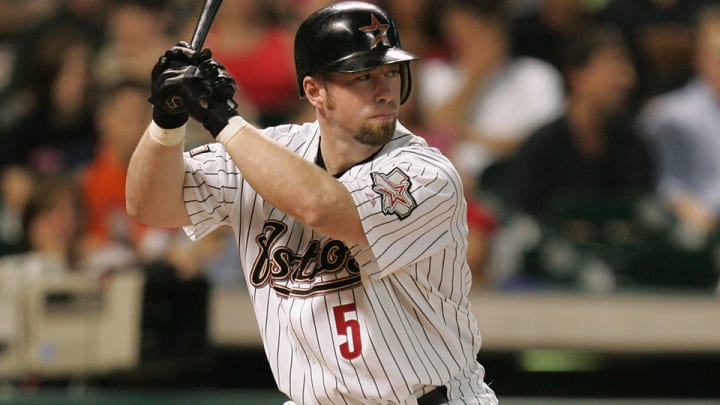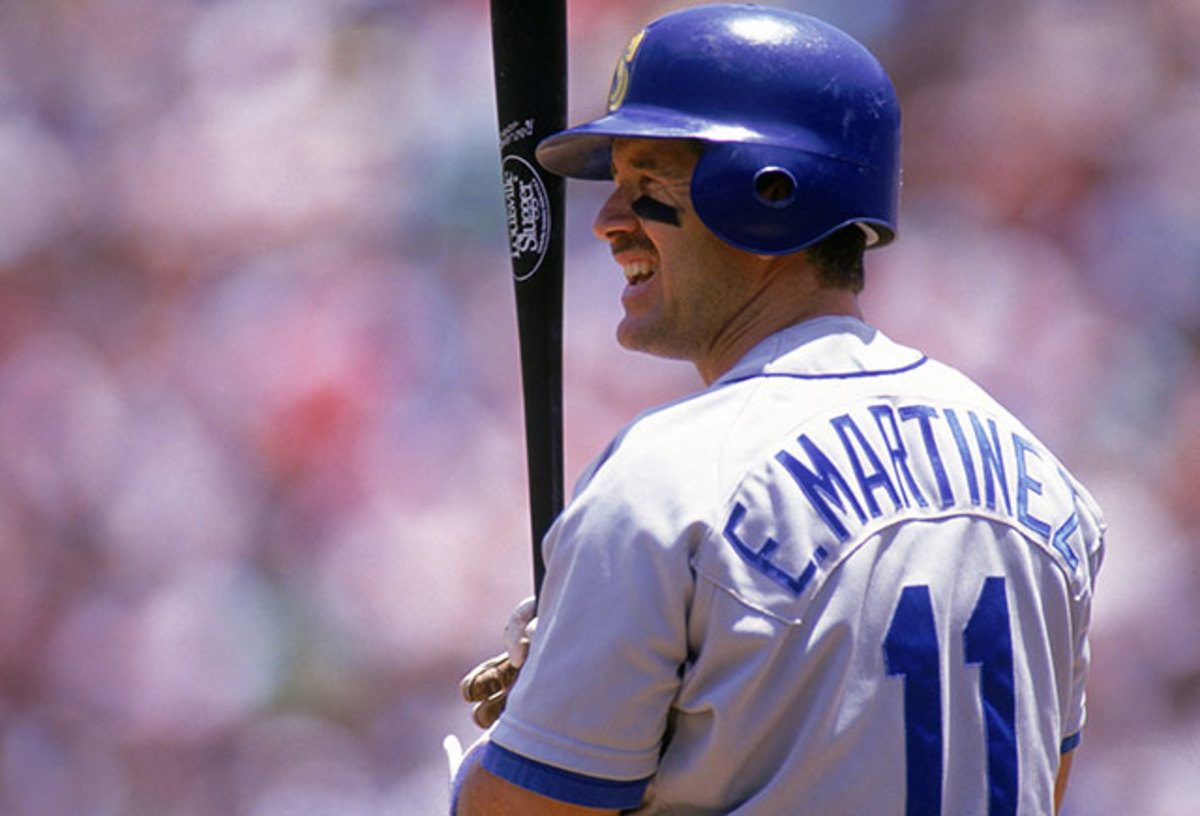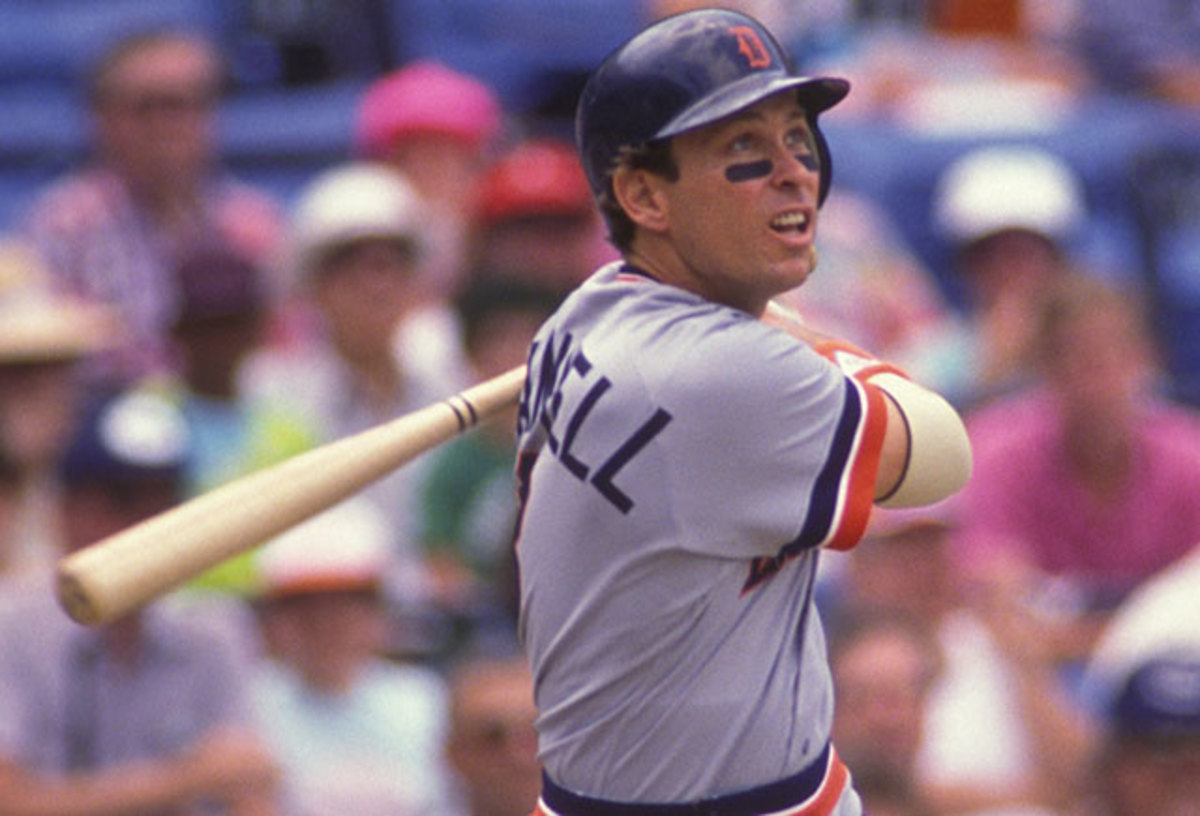Player-by-player breakdown of 2016 Hall of Fame ballot results

The 2016 Hall of Fame election is in the books, but beyond the celebration surrounding Ken Griffey Jr. setting the all-time record with 99.3% of the vote and other first impressions of the results, there's still a whole lot to chew on, starting with the further implications of the election of Mike Piazza. With an eye toward electoral history and more recent trends, what follows here is my rundown of the fates of all 32 candidates on the ballot, some of which will figure into my updated five-year outlook for Monday.
Ken Griffey Jr. (99.3%, N/A)
Now that Griffey has set a record for vote percentage, could anyone come along and top it? Yankees icons Mariano Rivera (2019) and Derek Jeter ('20) will likely have the best shot, but neither figures to do as well as Junior, the former because he was a closer and the latter because of the perception that he was overrated during his career, particularly on defense.
Mike Piazza (83.0%, up 13.1%)
Piazza's election was overdue given his credentials as the greatest hitting catcher of all time and as a much better defender than many realized. Given his previous admission to having used androstenedione back when it was still legal under U.S. policy and not banned by baseball, Piazza's election has been positioned by some as a pivotal one regarding the electorate's collective attitude toward performance-enhancing drugs. That may be an overstatement, but at the very least, it's worth noting that Piazza's entry bodes well for Jeff Bagwell (who similarly admitted to andro use when it was legal) and for 2017 ballot newcomer Ivan Rodriguez, who has been connected to PEDs only via Jose Canseco's Juiced.
Jeff Bagwell (71.6%, up 15.9%)
Though he received 77.5% of the vote in ballots published prior to election, Bagwell couldn't maintain that support among the rest of the electorate; he slipped to 65.4% among the unpublished ballots and wound up a mere 15 votes short. The good news is that he's an excellent bet to get in next year. Since the reinstatement of annual balloting in 1966, candidates who received at least 71.0% of the vote but less than 75.0% within the first 10 years of their candidacy went 16 for 16 in crossing the threshold the following year.
Tim Raines (69.8%, up 14.8%)
Those frustrated by the slow pace of Raines's candidacy and the obstacles put in its path should take a glass-half-full view of Wednesday's results. Needing to gain 20 points in his final two election cycles to reach 75%, he made up almost 3/4ths of the necessary ground in his first go and now needs only another 23 votes (based on an electorate of 440) to get over the threshold.
JAWS and the 2016 Hall of Fame ballot: Schedule for write-ups
To hammer the point I've already made twice this week: Since the reinstatement of annual balloting in 1966, 21 candidates (including Piazza) have received at least 69% of the vote but less than the necessary 75% needed for election. Sixteen were elected the next year, and a 17th (Red Ruffing) made it in the same year (1967) thanks to a since-discontinued runoff procedure. Of the remaining four, two (Orlando Cepeda and Nellie Fox) were in their final year of BBWAA eligibility but were eventually elected by the Veterans Committee. Roy Campanella needed two additional election cycles to surpass 75%, and Jim Bunning moved backwards before eventually being elected by the VC.
Trevor Hoffman (67.3%, N/A)
There's no shame in being the second-best–first-year candidate on this ballot—not when you're as well-positioned for enshrinement as Hoffman is. As I noted Wednesday, of the eight modern (1966 onward) candidates who received at least 65.0% of the vote in their debuts but fell short of 75.0%, five (Roberto Alomar, Yogi Berra, Rollie Fingers, Carlton Fisk and Whitey Ford) were elected the following year, two (Craig Biggio and Gaylord Perry) in their third year of eligibility and one (Phil Niekro) in his fifth. The average wait of that group was an additional 1.75 years, suggesting Hoffman closes the deal in 2017 or, at worst, '18.
Curt Schilling (52.3%, up 13.1%)
Despite the damage that he has inflicted on his candidacy with his controversial statements, Schilling was one of the 2016 ballot's big winners. He posted a double-digit gain and, more importantly, he crossed the 50% threshold, an important marker in electoral history. Excluding those currently on the ballot, every candidate 2016 Hall of Fame ballot (except Gil Hodges and Jack Morris) has eventually been elected either by the writers or a small-committee process, and Morris has yet to get his day on the latter front.
The Schilling household shouldn't put the champagne on ice just yet, though. Of the four post-1966 candidates who received between 50% and 60% of the vote in year four and were eventually elected, all took at least four more years to gain entry, with Hoyt Wilhelm (year eight) beating Andre Dawson and Tony Perez (year nine), not to mention Don Drysdale (year 10). Better news: fellow candidate Bagwell could join that group with election in year seven.
Roger Clemens (45.2%, up 7.7%)
Barry Bonds (44.3%, up 7.5%)
Hall hopes bleak for Bonds, Clemens; plus, my ballot and more thoughts
Statistically overqualified but dogged by PED connections that included futile attempts by federal prosecutors to convict them of perjury and/or obstruction of justice, the gruesome twosome of Bonds and Clemens gained ground among returning voters and newcomers; five out of nine ballots published among the latter group included them. Given the wide split between published and unpublished ballots (49.0 versus 37.4% for Bonds, 49.0 versus 39.7% for Clemens), their hopes of election rest on the probability that older, inactive voters who age out of the process continue to be replaced by younger voters less inclined to single them out for their era's institutional failures. Even then, Bonds and Clemens also have to change some minds among the holdovers. Still, another gain on par with this year will push them past 50%, a mark that points toward their eventual enshrinement.

Edgar Martinez (43.4%, up 16.4%)
Whether it was thanks to riding the coattails of Griffey, his former Seattle teammate, or to the rekindled debate about the greatest designated hitters brought on by David Ortiz reaching 500 home runs last season, Martinez posted the ballot's second-largest gain this year. With three years of eligibility remaining, he faces an uphill climb to find the remaining support, particularly because the year-seven candidates who polled in the same general vicinity—Duke Snider (41.0%), Bruce Sutter (38.5%), Bert Blyleven (35.4%)—needed to go past year 10 to be elected by the writers.
Mike Mussina (43.0%, up 18.4%)
Because he didn't have to spend a third straight election cycle in the shadow of aces with 300 wins in the bank and/or multiple Cy Youngs on the shelf, Moose was the ballot's biggest gainer. No starting pitcher with even borderline credentials will be eligible before Andy Pettitte in 2019, so Mussina has got a few election cycles where at most he has to share the spotlight with Schilling. Eight candidates within eight points in either direction in their third year on the ballot were eventually elected by the writers, though some needed more than 10 years.
Lee Smith (34.1%, up 3.9%)
In his 14th year of eligibility, Smith got roughly half the support of Hoffman, the man who broke his career saves record. Smith's percentage has fallen far below the 50.6% that he reached in 2012, but the fact that he crossed the 50% rubicon suggests that his candidacy will remain a topic of much discussion via the Expansion Era Committee.
Fred McGriff (20.9%, up 8.0%)
As with his fine career, the Crime Dog is having a tough time standing out in this pack. In the seventh year of his candidacy, he's still three percentage points short of where he was in 2012, the year before Bonds, Clemens, Piazza, Schilling, Sammy Sosa and Biggio all hit the ballot. Even among 15-year candidates, there's no precedent for anybody who's this low and this late eventually being elected by the writers. However, seven players within 5.1% of McGriff's share in either direction in their seventh year—Richie Ashburn, Bill Mazeroski, Hal Newhouser, Phil Rizzuto, Ron Santo and Red Schoendienst—did get elected by the Veterans Committee.
Jeff Kent (16.6%, up 2.6%)
Third-year candidate Kent received his highest percentage of the vote to date, but he's still behind Blyleven, whose 17.4% in year three is the lowest in modern history from which a candidate rebounded to be elected by the writers. What's more, it took Blyleven 14 years, which is time that Kent doesn't have given the rule change.
Larry Walker (15.5%, up 3.7%)
Six years into his candidacy, Walker still hasn't equaled his 22.9% of the vote from 2012. Signs point to him being the next Alan Trammell as the player who ages off the ballot despite being above the JAWS standard at his position. Perhaps sharing a ballot with fellow former Expos Raines and 2017 newcomer Vladimir Guerrero will cue a Montreal renaissance in Cooperstown.
Gary Sheffield (11.6%, down 0.1%)
The combination of a BALCO connection, outlier-level defensive metrics that crush his WAR and an overcrowded ballot have pushed Sheff near the bottom of the pile, though at least he's got a big enough base of support to remain on the ballot. Whether that holds out for eight more election cycles remains to be seen, but as attitudes soften toward PED-connected players—and his connection is more tenuous than most—he should eventually gain ground.
Billy Wagner (10.5%)
The ballot's other top-notch closer didn't get nearly the support in his first year of eligibility that Hoffman did, but Wagner at least received enough votes to get a second look. That's not a bad thing, given that his dominant numbers aren't easily dismissed and that WAR-based metrics may fall short when it comes to accounting for the high-leverage work that closers do.
Sammy Sosa (7.0%, up 0.4%)
While it seems unlikely that he'll last the entirety of his 10 years of eligibility on the ballot—he stayed on the ballot by just 10 votes this year, his fourth—Slammin' Sammy's candidacy will receive at least one more airing. Which isn't to say it's going anywhere; he's been within half a percentage point of this year's mark in each of the past three cycles.
Eliminated

Alan Trammell (40.9%, up 15.8%)
The Tigers' great became the first player above the JAWS standard at his position to age off the ballot since Santo in 1998, but he did receive his highest voting percentage in his 15 years on the ballot. Less qualified candidates such as Cepeda, Fox, Mazeroski and Newhouser were elected by the Veterans Committee after posting big gains in their final year of BBWAA eligibility. Trammell may yet go that route, though an Expansion Era Committee rule requires that he go through a one-year waiting period, which means that he will miss that committee's 2017 ballot and will have to sit out the '18 and '19 veterans committee ballots that consider players from the so-called Golden Era and Pre-Integration eras, respectively. So while former Tigers teammates Jack Morris (who aged off the ballot in 2014) and Lou Whitaker (who went one-and-done in '01) may be considered next year, Trammell will have to wait until '20.
Mark McGwire (12.3%, up 2.3%)
While Trammell got 15 years of consideration, McGwire got only 10 thanks to the Hall of Fame's unilateral rule change, which has been interpreted by many (myself included) as aiming to curtail the endless discussion of PED-linked candidates. Like Trammell, McGwire will have to wait until 2020 at the earliest for his next shot at Cooperstown, though the failure of the Veterans Committee and their era-based successors to elect a living player since Mazeroski in '01 suggests Big Mac won't be making reservations at Cooperstown's Otesaga Resort Hotel anytime soon.
Jim Edmonds (2.5%)
By far the most deserving candidate to go one-and-done this year, Edmonds suffered the same fate that fellow centerfielder Kenny Lofton, who's a few notches above him in the JAWS rankings, did in 2013. The value of Edmonds's spectacular defense has a wide variance across different metrics, so it's a shame that he couldn't get a longer look to provide more clarity on where he stacks up relative to his contemporaries.
Nomar Garciaparra (1.8%, down 3.7%)
The third member of the great shortstop trinity of the 1990s made it through one ballot on the strength of a Hall of Fame-caliber peak, but this time around, those voters shifted their attention elsewhere. That's the way it crumbles, cookiewise.
Mike Sweeney (0.7%)
Nice guys may finish last in Leo Durocher's book, but Sweeney, who was among the game's most highly regarded players for his upstanding character, did receive three votes. Rest assured, he has already written thank you notes in perfect penmanship to those voters.
David Eckstein (0.5%)
Some may grit their teeth at the 2006 World Series MVP receiving even two votes, one from former BBWAA president Chaz Scoggins. The law firm of Babip, Pecota, Vorp & Eckstein could not be reached for comment.
Jason Kendall (0.5%)
Kendall's career is stronger than many perceived to to be—he's 18th in JAWS among catchers—but only two voters, neither of whom published their ballots, found room for him.
Garret Anderson (0.2%)
Anderson avoided a shutout by receiving one vote from veteran scribe Earl Bloom, who has spent the past 36 years at the Orange County Register, where he covered Anderson (and Edmonds, for whom he also voted) in his days with the Angels. This kind of token vote to avoid a shutout used to be common, but it has become less so amid such stacked ballots.
Brad Ausmus, Luis Castillo, Troy Glaus, Mark Grudzielanek, Mike Hampton, Mike Lowell, Randy Winn (0.0%)
It's no surprise that these seven first-time candidates didn't get a vote, but it's no shame either. To qualify for the ballot requires playing in the major leagues for 10 years, and while their credentials weren't anything close to Hall-worthy, each of these men made their marks (and their millions) in the game, many by making All-Star teams, some by winning pennants and World Series, and at least one (Ausmus) by setting himself up for a managerial career. As the great Vin Scully often says, “They also serve who only stand and wait."
